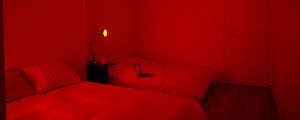A paradox surrounds the design sector in France. Overloading the consumer and so little known to the general public, it is everywhere and nowhere at the same time. The 2013 edition of Designer’s Days put the spotlight on foresight through the theme entitled ‘And tomorrow…’. Digital media changed, not without controversy, the face of art, music and literature through content dematerialisation and easily venturing into design, the territory the most impacted by new technologies in the creative industries. Unlike art, design doesn’t exist on its own basis but rests on a causal relationship between humans and their environment, becoming increasingly embedded in our daily lives. This means the designer’s role is now dedicated to supporting the intelligence of the above-mentioned interaction.
The digital era marks an industrial revolution that is probably as far-reaching as that of the invention of the steam engine or the printing press. In that perspective, what can digital media bring to design, and vice versa?
Gaité Lyrique helped set the stage and springboard for future design by organizing a conference bringing together digital designers like Jean-Luc Frechin, François Brument, and Nicolas Henchoz, the Director of the much talked about EPFL + ECAL Lab exhibiting at La Dynamo in Pantin. Among the outstanding projects presented was Mo, a research project exploring innovative gestural interfaces for musical expression that will be on the market next year. In his work ‘Vase#44’, François Brument employs digital 3D modeling techniques for a series of made-to-measure vases shaped by the voice. Therefore, the more we speak at length, the higher the vase is; the more we talk loudly, the larger it is. Digital design here opens up incredible possibilities inciting users to participate in the object-making process.
The second inmissaible spot was Experience 16 at Le Laboratoire where the public is invited, until September 15 to experience virtual coffee using the Ophone, a kind of “olfactory phone” developed by students at Harvard University, an artist, a designer, a master perfumer and a computer scientist. David Edwards, the initiator and founder of Le Laboratoire stands for an olfactory language and declares, “in a contemporary world, seemingly saturated with visual and auditory information, it seemed to him important to imagine a new dimension to global communication, one that might be more emotive, more sensual, more universal even.”
In parallel with the fascination for the digital age, there is a return to archaisms nowadays. The Futur archaïque flagship exhibition at Passage du Retz is to be considered a manifestation of what we could name alternative or ‘credible’ design, reconciling the old and the new, the primitive and the progressive. The combination of timeworn forms with contemporary techniques works rather well, a proof that breaking radically with the past is not absolutely necessary to be surprised and delighted. Indeed, pieces shown on the occasion were completely out of the ‘hype cycle’ and beyond the ‘wow’ effect usually attributed to new technologies and its promises. The Bichos lamp by Marthino Pita was one of the most glaring examples, expressing both novelty and familiarity. Hrefna by Milos Ristin was also remarkable by simply comparing the visual language of man-made objects with natural elements like the skull of a minke whale and gathering them in the same piece, as both inspiration and the outcome.
More generally, the design of tomorrow gives a new impetus to our lifestyle conception, with guns blazing. When it comes to grasping its meaning, the sole question of the final object is not pertinent anymore; it’s about what such industry creates in terms of customs and practices. Designing the same product for all users is long gone and the transformation of emerging technologies into new experiences is setting its course for the long-term future.
Header Image: François Brument, vases #44.
















